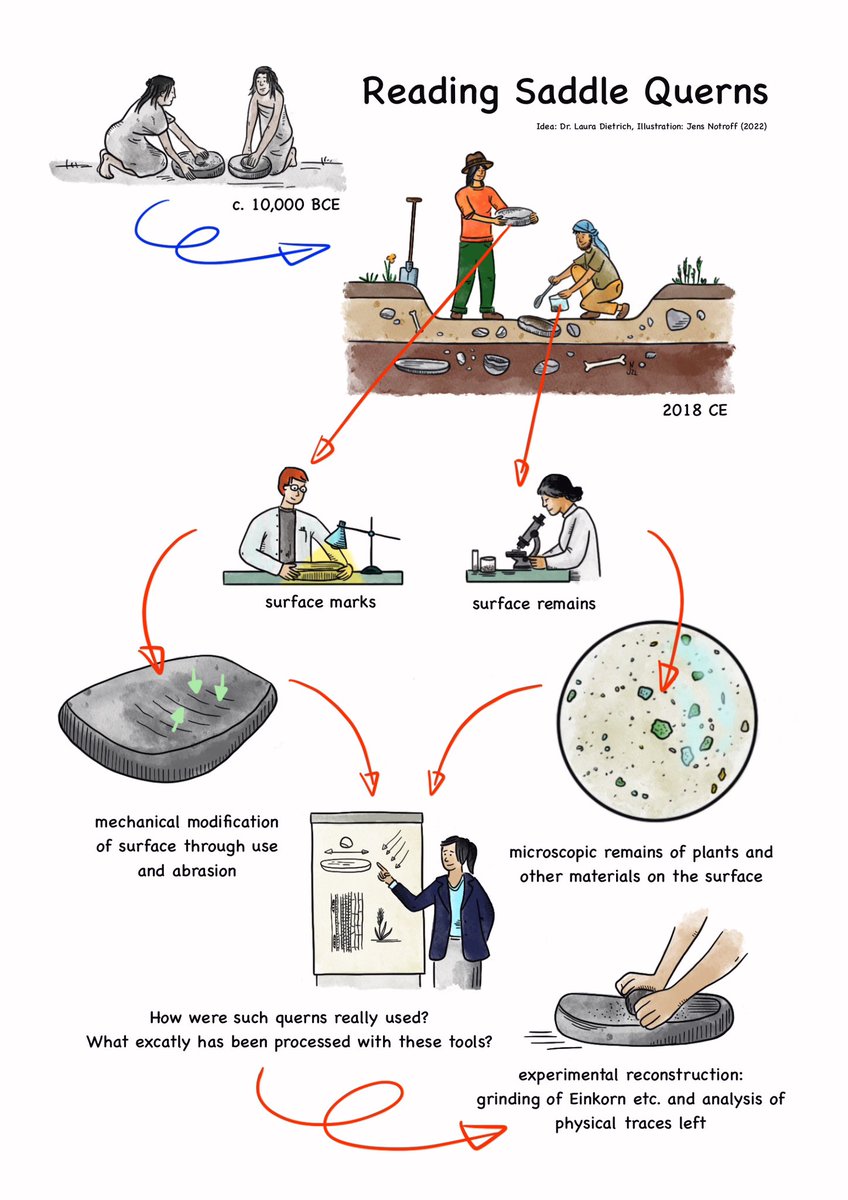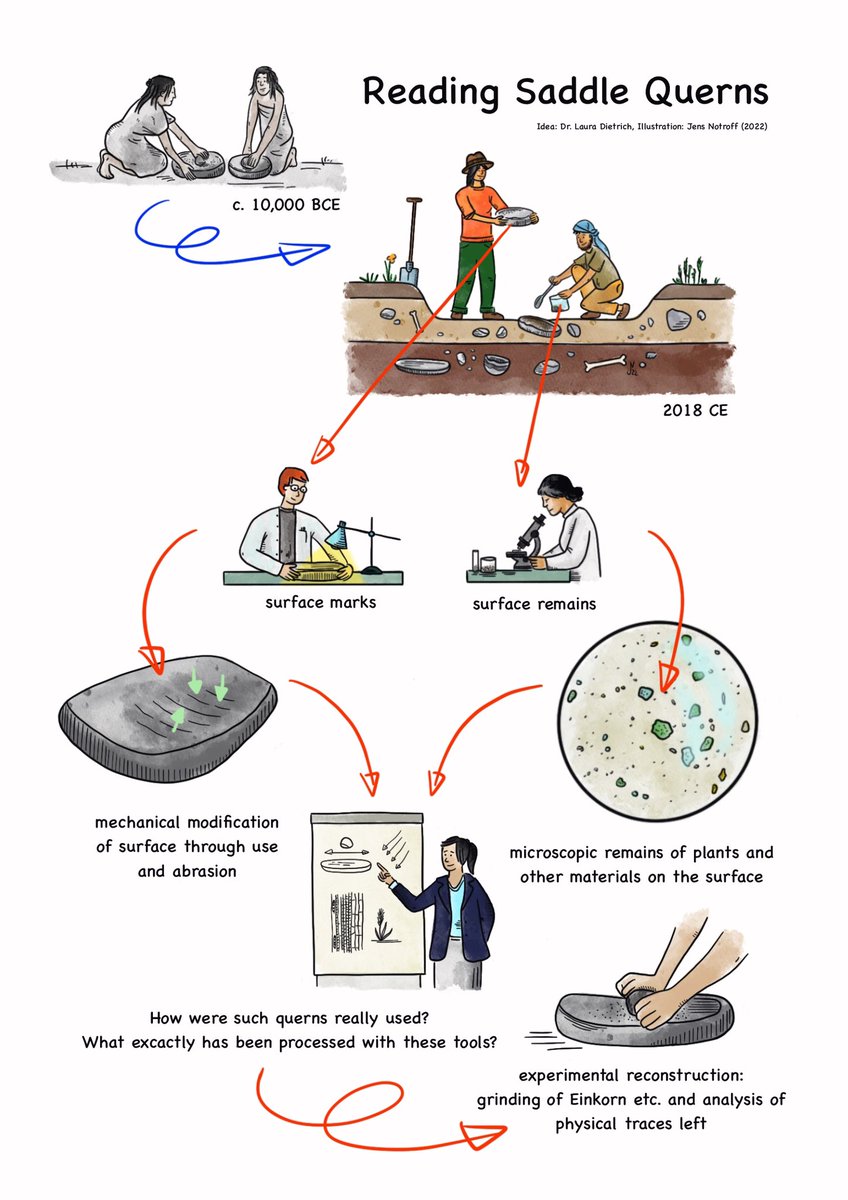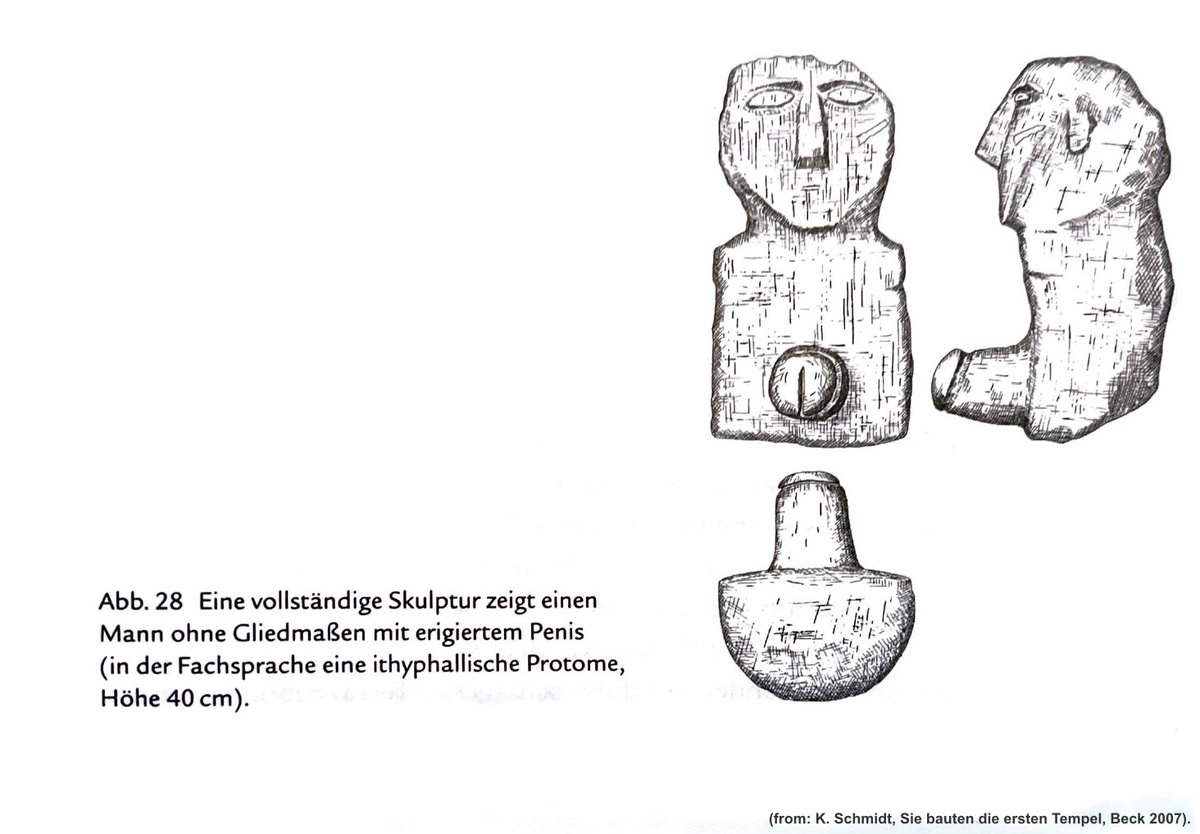
Genuinely digging the idea of #GraphicAbstracts, I was totally game than @lauradietrich_ asked if I could help with a visualisation of her latest #research concerning #Neolithic #querns and #FoodProcessing …
So, here we go: "Reading Saddle Querns", a short introduction.
So, here we go: "Reading Saddle Querns", a short introduction.

Now you're curious about what this research is about, aren't you? 😉
Here's a joint article with some insight into what the #querns from early #Neolithic #GobekliTepe can tell us:
journals.plos.org/plosone/articl…
Here's a joint article with some insight into what the #querns from early #Neolithic #GobekliTepe can tell us:
journals.plos.org/plosone/articl…
Still want to read more?
Well, good news: @lauradietrich_ has published a whole book on "#PlantFood Processing Tools at Early Neolithic #GöbekliTepe" in the meantime.
Available online and #OpenAccess via @Archaeopress here: archaeopress.com
Well, good news: @lauradietrich_ has published a whole book on "#PlantFood Processing Tools at Early Neolithic #GöbekliTepe" in the meantime.
Available online and #OpenAccess via @Archaeopress here: archaeopress.com

Typo corrected (thanks for an eagle-eyed check, @sapinuwa! 👍😉). 

• • •
Missing some Tweet in this thread? You can try to
force a refresh
















